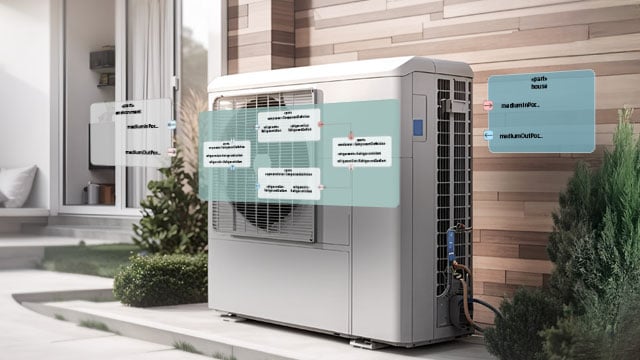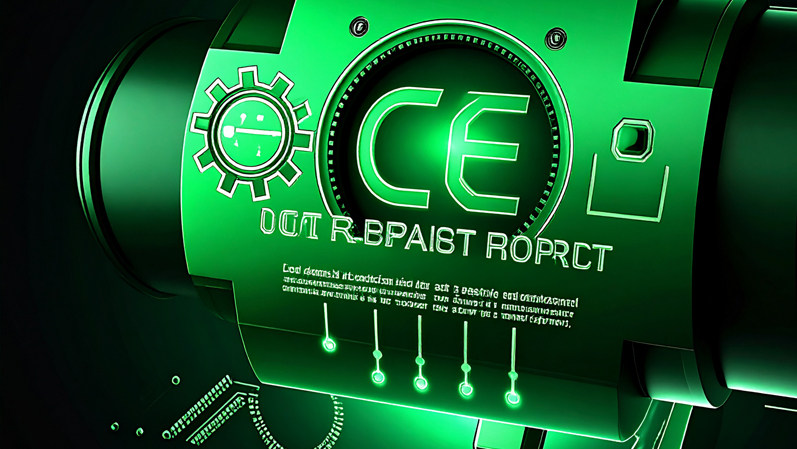Changes to the CE Marking for Machines and Products from 2027
Dr. Jan Seyfarth
30.07.2025
Ensuring Functional Safety and Cybersecurity Throughout the Product Lifecycle
With the CE marking, manufacturers confirm that their products comply with all applicable EU directives and regulations. Starting in 2027, this marking will take on a new dimension: it will serve as proof of cybersecurity competence. The new Machinery Regulation (MVO) and the Cyber Resilience Act (CRA) challenge companies to think and implement functional safety and digital resilience holistically. This article explains what changes are coming—and how to prepare strategically.
What Does the New CE Marking Mean for Machines?
Imagine this: In January 2027, you launch your new product, your new machine. The CE marking is, of course, attached as always. But this time, the inspector doesn’t just come with the usual checklist and ask about mechanical safety. He also asks about your cybersecurity concept for the entire product lifecycle, your software documentation, and your incident response plan for the next five years.
Welcome to the new reality: the CE marking is going digital. For many, the new rules starting in 2027 will be an uncomfortable truth. Because from January 20, 2027, the new Machinery Regulation (MVO) and the Cyber Resilience Act (CRA) will apply—and with that, everything will change.
Why Functional Safety and Cybersecurity Are Becoming Part of the CE Marking
Modern machines and products are networked, collect data, communicate with other systems, and are controlled by software. This digitalization brings two critical aspects:
Functional Safety (FuSa) ensures that your machine operates safely even in the event of faults. For example, if a sensor in a production system fails, the machine must still be able to stop safely.
Cybersecurity protects against digital attacks. For example, if someone tries to hack into your machine via Wi-Fi, they must not succeed.
In the digital world, both aspects are inseparably linked. A cyberattack can compromise functional safety, and security gaps can become cyber risks.
Practical Example: Safety Risks Due to Lack of Integration
In the past, functional safety and cybersecurity were considered separately. That no longer works. Here’s a real-world example:
Monday, 08:00 AM: A CNC machine in production is running normally. It has an emergency stop switch for safety and a Wi-Fi connection for remote maintenance.
Tuesday, 2:30 PM: The emergency stop switch jams due to a defect. The machine can no longer be stopped properly. The technician activates remote access via Wi-Fi to control the machine safely.
Wednesday, 11:15 AM: A cybercriminal notices the increased Wi-Fi usage and hacks into the system. They can now manipulate both the machine control and the “replacement emergency stop” via the network.
Thursday, 9:45 AM: What began as a simple mechanical defect is now a double safety risk: the machine can no longer be stopped safely—neither mechanically nor digitally.
This chain reaction shows: A safety problem becomes a security risk and vice versa. Both aspects are now inextricably linked and require an integrated approach. Modern digital engineering tools make it possible to consider such interactions from the beginning and develop and document both aspects together.

Webinar “Step by Step Through the Cybersecurity Lifecycle”
With the knowledge from this webinar, you can sustainably and efficiently design the cybersecurity of your products. You will receive valuable tips on what matters in the concept phase, during verification and validation measures, and in penetration testing.
New Requirements: MVO and CRA from 2027
The Machinery Regulation (MVO) and the Cyber Resilience Act (CRA) fundamentally change the rules. Important: They must be considered together.
MVO and CRA: Who Is Affected?
All products with digital components are affected by the Machinery Regulation and the Cyber Resilience Act:
- Machines with apps or touchscreens
- Devices with Wi-Fi, Bluetooth, or other interfaces
- Systems that collect or transmit data
- Products with software control
New Requirements for Documentation and Processes – What’s New?
CE marking now requires:
- A cybersecurity concept for the entire product lifecycle
- Software documentation and regular updates
- Incident response plans for at least five years
- Proof of safety even in networked systems
The Problem: Complexity Meets Unawareness
There is still great uncertainty in the SME sector about what needs to be done. But ignorance does not protect against EU regulations. The consequences: contractual penalties due to non-compliant machines and delayed market launches of new products.
The real challenge lies in documentation. How do you document cybersecurity over the years? Excel sheets and Word documents are no longer sufficient. What’s needed is a system that:
- Links product architecture with requirements
- Connects hardware design with software security
- Provides audit-proof evidence at the push of a button
- Remains monitorable over years
From Obligation to Competitive Advantage: Leveraging Integration
The new requirements don’t just mean more effort—they also offer the opportunity to fundamentally improve development processes.
Leverage synergies: Instead of viewing safety and security separately, integration creates efficiency gains. Example: A risk analysis that considers both technical failures and cyber threats is more complex than two separate analyses—but significantly more complete and ultimately more effective.
Model-based development: Modern digital engineering tools provide clarity. Instead of isolated documents, you get a consistent system in which all information is interconnected. Changes are automatically updated in all affected areas.
Competitive advantages: Those who act today will not only meet the requirements in 2027 but also benefit significantly:
- Shorter development cycles through more efficient processes
- Higher product quality through integrated safety concepts
- Better market position through demonstrable cybersecurity
Recommendations: The Way Forward
Quick Check: Am I Affected?
- Does my product have an app or software?
- Can it connect to other devices?
- Does it collect or transmit data?
- Does it use digital interfaces?
If any answer is “yes”, you are affected.
First Steps:
- Build expertise: Connect with experts who understand both regulatory requirements and practical implementation.
- Inventory: Analyze your current products and development processes.
- Tool strategy: Evaluate model-based engineering tools that consider safety and security in an integrated way.
- Enablement partnership: Find partners who support SMEs in entering the new CE topic.
Conclusion: The Future Is Digital, Secure, and Connected
The message is clear: 2027 is closer than many think. The CE marking is evolving from a mechanical proof to a digital certificate of competence. Those who see this transformation as an opportunity and take action today will not only be compliant tomorrow but also work more efficiently.
Digital engineering is the key to this transformation. Functional safety and cybersecurity are becoming integral parts of the development process. The companies that understand and implement this will be tomorrow’s winners.
The first step is always the hardest—but also the most important. Get informed, connect with experts, and turn the regulatory challenge into a strategic advantage.
FAQs CE marking
What is the CE marking for machines starting in 2027?
As of January 20, 2027, machine manufacturers must also demonstrate cybersecurity measures as part of CE marking. The new Machinery Regulation (MVO) and the Cyber Resilience Act (CRA) require companies to ensure comprehensive protection of their products.
Which machines are affected by the new CE marking?
All machines with digital components—such as Wi-Fi, Bluetooth, software control, or data transmission—will be subject to the extended CE marking requirements starting in 2027.




